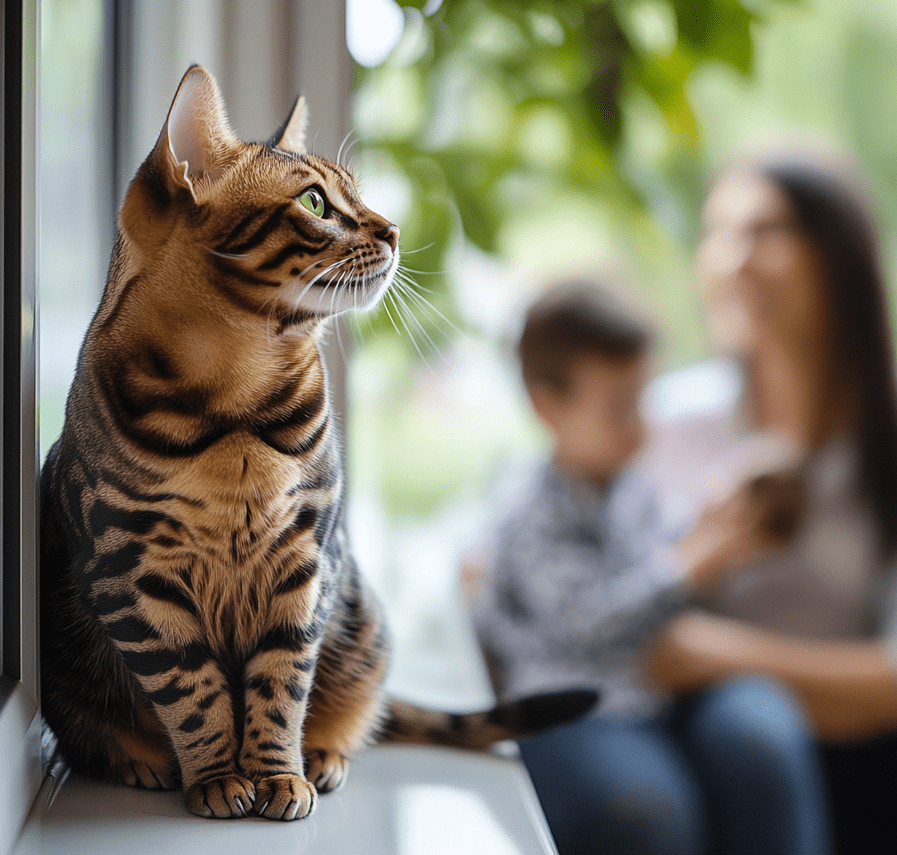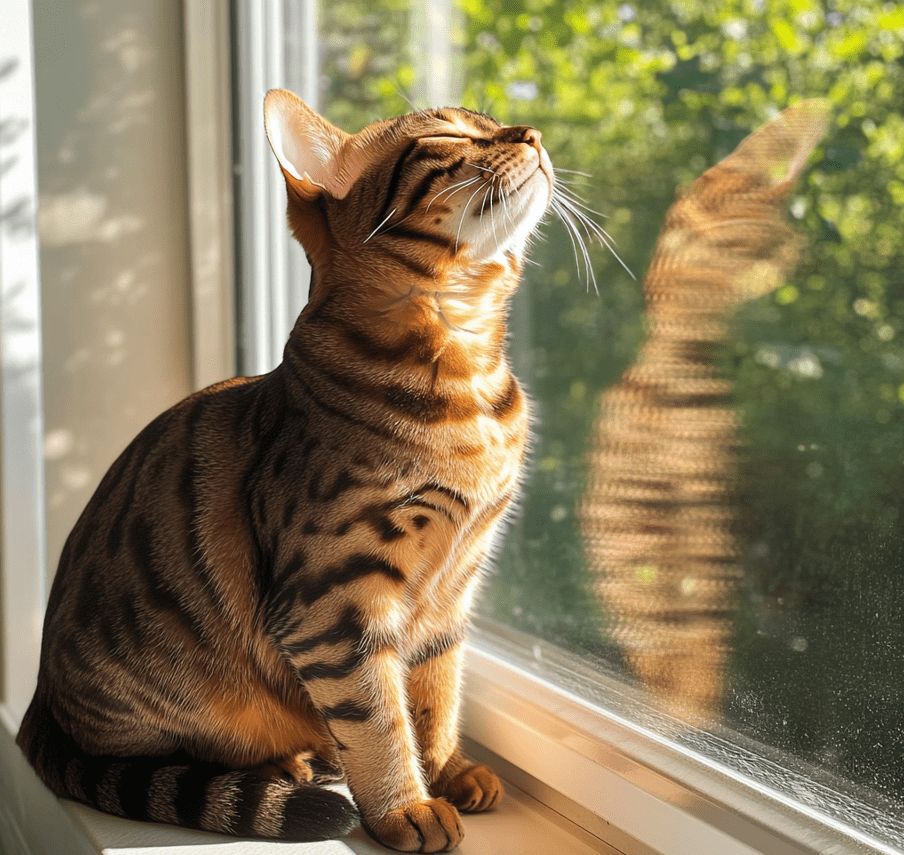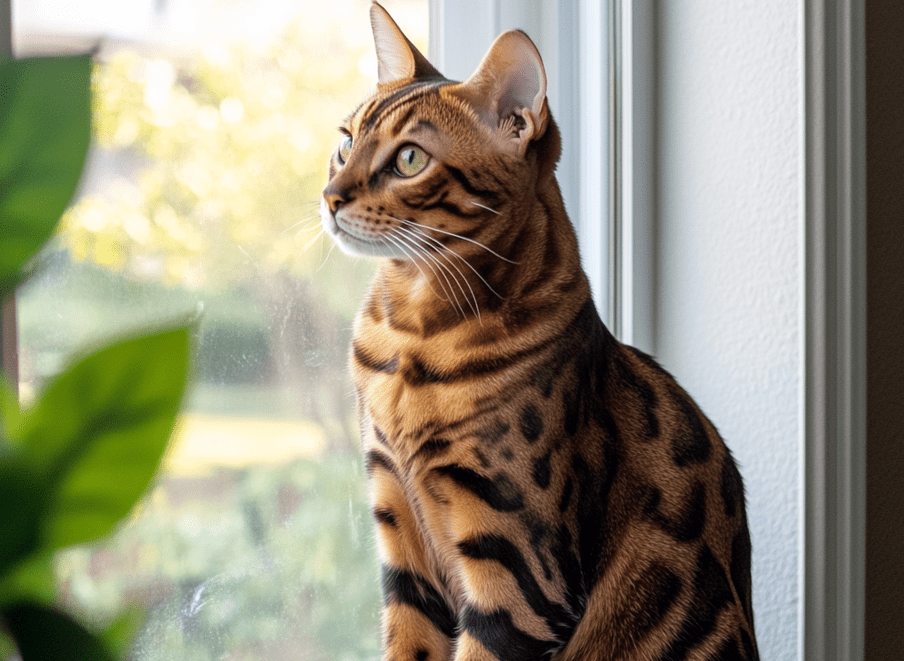
Introducing a Bengal cat to children can be a rewarding experience, blending the energetic, playful nature of this exotic breed with the curiosity and enthusiasm of kids. Bengals, known for their striking leopard-like appearance and vibrant personalities, require careful introductions to ensure a safe and harmonious relationship with children. This comprehensive guide will walk you through the steps to successfully introduce a Bengal cat to children, fostering a bond that is both joyful and secure.
Understanding the Bengal Cat Breed
Before you introduce a Bengal cat to children, it’s essential to understand the breed’s unique characteristics. Bengals are a hybrid of domestic cats and the Asian leopard cat, resulting in a feline with a wild appearance and a dynamic personality. They are highly intelligent, active, and curious, often requiring more stimulation than other cat breeds. These traits make them wonderful companions but also demand thoughtful management when interacting with kids.
Bengals are known for their:
Energy Levels: They love to climb, jump, and explore, often engaging in playful antics.
Intelligence: Bengals are quick learners and may even enjoy interactive games or puzzle toys.
Sociability: While affectionate, they can be selective about their interactions and may need time to warm up to new people, including children.
Vocal Nature: Bengals often communicate through chirps, meows, and other vocalizations, which can be surprising for kids unfamiliar with the breed.
Understanding these traits helps set realistic expectations for both the cat and the children, ensuring a smoother introduction process.
Why Careful Introductions Matter

Bengal cats, with their high energy and sometimes assertive personalities, may not immediately take to the unpredictable movements or loud noises often associated with children. Conversely, kids may not understand how to interact gently with a cat, potentially leading to stress for the animal or unintentional scratches or bites. A well-planned introduction minimizes these risks, creating a foundation for a positive relationship.
Key reasons for a cautious approach include:
Safety: Ensuring neither the cat nor the child is harmed during interactions.
Comfort: Helping the Bengal feel secure in the presence of children.
Trust: Building a bond based on mutual respect and understanding.
Long-Term Harmony: Establishing habits that lead to a lasting, positive relationship.
By prioritizing safety and comfort, you pave the way for a rewarding companionship between your Bengal cat and your children.
Preparing for the Introduction
Preparation is critical when introducing a Bengal cat to children. This phase involves setting up the environment, educating the children, and ensuring the cat feels secure.
1. Create a Safe Space for the Bengal
Bengals thrive in environments where they have places to retreat and feel safe. Before the introduction, set up a dedicated space for your cat with:
A Quiet Room: A calm area where the cat can relax without interruptions. Include a cozy bed, litter box, food, water, and toys.
High Perches: Bengals love vertical spaces, so provide cat trees or shelves where they can observe from above.
Hiding Spots: Cardboard boxes or covered cat beds offer a place for the cat to retreat if overwhelmed.
This safe space allows the Bengal to decompress and feel in control, which is especially important during the initial meetings with children.
2. Educate Children About Bengal Cats
Children need to understand how to interact with a Bengal cat to ensure safety for both parties. Tailor the conversation to the child’s age, but cover these key points:
Gentle Touch: Teach kids to pet the cat softly, avoiding rough handling or pulling the tail.
Respecting Boundaries: Explain that the cat may need alone time and should not be chased or forced to interact.
Reading Body Language: Show children signs of a happy cat (purring, relaxed posture) versus a stressed cat (hissing, flattened ears, swishing tail).
No Sudden Movements: Bengals can be startled by quick or loud actions, so encourage calm behavior.
For younger children, consider using books or videos about cats to make the learning process fun and engaging. Role-playing scenarios, like pretending to pet a stuffed animal, can also help them practice gentle behavior.
3. Prepare the Cat
If your Bengal is new to the household, give them time to adjust to their environment before introducing them to children. Allow the cat to explore the home, become familiar with its safe space, and bond with the adults in the household. A confident, settled cat is more likely to respond positively to children.
You can also:
Introduce Scents: Let the cat smell an item belonging to the child, like a blanket or piece of clothing, to familiarize them with the child’s scent.
Use Positive Reinforcement: Reward the cat with treats or praise for calm behavior in new situations, building their confidence.
Step-by-Step Guide to Introducing a Bengal Cat to Children
With preparation complete, follow these steps to introduce your Bengal cat to children safely and effectively.

Step 1: Initial Observation
Start by allowing the cat and child to observe each other from a distance. This could mean:
Using a Baby Gate: Place a baby gate at the door of the cat’s safe room so the cat can see the child without direct contact.
Supervised Viewing: Hold the cat in your arms while the child sits quietly across the room.
Encourage the child to remain calm and avoid sudden movements. This step helps the Bengal become accustomed to the child’s presence without feeling threatened.
Step 2: Controlled Interaction
Once the cat appears relaxed, move to controlled interactions. These should be short and supervised to prevent overwhelming either party.
Supervised Petting: Have the child sit on the floor and allow the cat to approach. Guide the child’s hand to pet the cat gently along the back or under the chin, areas most cats enjoy.
Offer Treats: Let the child give the cat a treat (under supervision) to associate the child with positive experiences.
Keep Sessions Brief: Limit initial interactions to 5–10 minutes, gradually increasing the duration as the cat and child become more comfortable.
Always stay close to intervene if the cat shows signs of stress or the child becomes overly excited.
Step 3: Interactive Play
Bengals love playtime, and engaging in interactive activities can strengthen the bond between the cat and child. Use toys that allow the child to play with the cat while maintaining a safe distance, such as:
Wand Toys: These encourage the cat to chase and pounce, satisfying their hunting instincts.
Laser Pointers: Bengals enjoy chasing the light, but always end the game with a physical toy to prevent frustration.
Puzzle Toys: For older children, involve them in setting up puzzle feeders that stimulate the cat’s mind.
Playtime helps channel the Bengal’s energy and teaches children how to engage with the cat in a fun, respectful way.
Step 4: Gradual Unsupervised Interaction
As the cat and child grow more comfortable, you can begin to allow brief unsupervised interactions, but only if:
-
The child consistently demonstrates gentle, respectful behavior.
-
The cat shows no signs of stress or aggression.
-
The environment is safe, with no hazards like open windows or accessible toxic substances.
Always check in periodically and ensure the cat has access to their safe space at all times.
Tips for Ongoing Success
To maintain a positive relationship between your Bengal cat and children, incorporate these practices into daily life:
Set Rules for Interaction: Reinforce guidelines like not disturbing the cat while eating or using the litter box.
Encourage Responsibility: Involve older children in tasks like feeding or brushing the cat to foster a sense of caregiving.
Monitor Body Language: Continue to watch for signs of stress in the cat and address them promptly.
Provide Enrichment: Keep the Bengal stimulated with toys, climbing structures, and interactive games to prevent boredom, which can lead to unwanted behaviors.
Common Challenges and Solutions
Even with careful planning, challenges may arise. Here are some common issues and how to address them:

1. The Cat Hisses or Swats
If the Bengal hisses or swats at a child, it’s likely feeling threatened or overwhelmed. Pause interactions and:
Give the Cat Space: Allow the cat to retreat to their safe space and try again later.
Review Child’s Behavior: Ensure the child isn’t being too loud or rough.
Reintroduce Slowly: Return to earlier steps, like observation, to rebuild trust.
2. The Child Is Too Excited
Young children may struggle to stay calm around an energetic Bengal. To manage this:
Practice Calm Behavior: Use games or activities to teach the child how to move slowly and speak softly.
Redirect Energy: Engage the child in a different activity before interacting with the cat to burn off excess energy.
Supervise Closely: Stay nearby to guide the child’s actions.
3. The Cat Avoids the Child
If the Bengal consistently avoids the child, they may need more time to build trust. Try:
Positive Associations: Have the child offer treats or play with the cat using a favorite toy.
Patience: Allow the cat to approach the child on their terms, avoiding forced interactions.
Scent Familiarity: Continue using scent-swapping techniques to make the child’s presence feel familiar.
Special Considerations for Different Age Groups
The approach to introducing a Bengal cat to children varies by the child’s age:
Toddlers (1–3 years): Toddlers are unpredictable and may not understand gentle handling. Supervise all interactions closely, and focus on observation rather than direct contact. Use simple phrases like “soft touch” to guide behavior.
Preschoolers (4–6 years): Preschoolers can learn basic cat care but still require constant supervision. Teach them to read the cat’s body language and engage in guided play.
School-Age Children (7–12 years): Older children can take on more responsibility, like feeding or playing with the cat. Encourage them to learn about the Bengal breed and involve them in enrichment activities.
Teenagers (13+ years): Teens can handle more complex tasks, like training or grooming the cat. They can also help reinforce rules for younger siblings.
The Benefits of a Bengal Cat and Child Bond
When done correctly, introducing a Bengal cat to children offers numerous benefits:
Companionship: Bengals are loyal and can become a child’s trusted friend.
Responsibility: Caring for a pet teaches children about empathy and duty.
Activity: The Bengal’s playful nature encourages kids to stay active through interactive play.
Emotional Growth: Interacting with a pet can boost a child’s confidence and emotional intelligence.
Conclusion

Introducing a Bengal cat to children safely requires preparation, patience, and ongoing supervision. By understanding the Bengal’s unique personality, creating a safe environment, and guiding children to interact respectfully, you can foster a strong, loving bond that enriches both the cat’s and the child’s life. Follow the steps outlined in this guide, stay attuned to the needs of both parties, and enjoy the rewarding experience of watching your Bengal cat and children grow together in harmony.
This comprehensive approach ensures that your Bengal cat and children build a relationship based on trust, respect, and mutual enjoyment, making your home a happier place for everyone.



